Electricity grids are finely balanced systems, which depend upon order and are wrecked by chaos; chaos of the kind these things deliver on a daily basis across Australia’s Eastern Grid.
Pictured above – courtesy of Aneroid Energy – is the output of every wind turbine connected to Australia’s Eastern Grid, situated from Far North Queensland, down through New South Wales, all over Victoria, Northern Tasmania and South Australia, with a combined notional capacity of 6,702 MW during June.
Throwing 2-3,000 MW into the grid one minute and sucking the same magnitude out, the next, the chaotic intermittency associated with wind power threatens the Eastern Grid with a complete ‘system black’ this coming summer – to match the complete ‘system black’ enjoyed by South Australians in September 2016, thanks to its obsession with wind power.
A couple of Australia’s leading electrical engineers, Tom Quirk and Paul Miskelly, take a critical look at what is likely to happen to the Eastern Grid if a proposal for a 1,000 MW wind farm in North-West Tasmania gets off the ground. It’s the same proposal that sent former Greens leader, Dr Bob Brown into fits of apoplexy, because it would spoil his pristine view and slice and dice some rare and endangered birds and bats on his home turf.
Here’s Paul and Tom.
Tasmania – Australia’s offshore wind farm?
Jo Nova Blog
Tom Quirk and Paul Miskelly
12 September 2019
Is it possible that Tasmania could become Australia’s offshore wind farm? A proposal by UPC Renewables [1] an international developer of wind farms, suggests that a 1000 MW wind farm could play an important role in moderating the intermittent supply of electricity from renewable resources.
UPC wants to construct what would be one of the largest wind farms in the world on Robbins Island, near Cape Grim in northwest Tasmania. There are two wind farms in the north of Tasmania that are part of the Australian Energy Market (AEM). These are Woolnorth to the west and Musselroe to the east. These and the proposed site on Robbins Island are shown in Figure 1 with the Victorian wind farm at Bald Hills, the closest mainland wind farm to Tasmania and along with the Basslink connection that joins the Tasmania grid to the grid in Victoria.
Figure 1: Layout of operating and proposed wind farms in Tasmania, along with Basslink and Bald Hills in Victoria.
At present Tasmania with hydropower, wind farms and the Basslink connection has enough energy available for its own needs and is also able to supply surplus energy to Victoria as Basslink has a capacity of 400 MW, and for short periods of up to 4 hours, 630 MW. However, adding 1000 MW potential of the new wind farm will require not only a transmission line from Robbins Island to the Basslink terminal near Launceston but also an additional 500 MW link to Victoria.
The key question is what will these connectors cost for the consumers and taxpayers?
However, before discussing this, an independent assessment of the benefits, and also, any potential risks, of the proposed new wind farm, needs to be made.
In their submission, UPC Renewables provides an analysis that states:
“UPC has done its own analysis of 5 minute NEM data for 2017 which demonstrates that the correlation between operating Victorian and Tasmanian wind farms is very low (i.e. R- Squares below 0.2 in most cases — refer Table 3 appended See Figure 2 below). This points to the value of development in geographical diverse locations to minimize coincidently high or low output and hence avoid the issues that coincident generation or lack thereof brings.”
The key point in the above quote is the use of the term “correlation”. A correlation coefficient ranges from +1 to -1 or 100% to -100%. The UPC quote above and their table quoted there refers to the correlation coefficient as “R-Squares”, or “r2“. How or where does this r-squared term arise? The question arises because “R-Squares” is not a term in normal usage as a correlation coefficient [2].
A second point about looking at correlations among the outputs of these wind farms is that the energy generated as a function of time needs to be examined in detail as there may well be low correlations but nonetheless swings in energy output of any of the wind farms, even large swings, may occur, being not necessarily made apparent by the correlation analysis alone.
Figure 2: Extract from Table 3 appended to the UFC document. The table shows correlation values for the wind farms shown in Figure 1 and the average values for the 35 wind farms examined.
Given that there are ambiguities arising from the form of the UPC renewables statement as per the quote above, the rule in any such potential for confusion is: look at the data.
Correlations among selected Wind Farm outputs
The 5 minute NEM data for 2017 has been obtained from the AEMO website and Figure 3 shows the 5 minute variations for the month of July 2017 for Woolnorth and Bald Hills. Figure 4 shows Woolnorth and Musselroe. These wind farms are about 250 km apart from each other.
Figure 3: 5 minute variations for the month of July 2017 for Woolnorth and Bald Hills.
Figure 4: 5 minute variations for the month of July 2017 for Woolnorth and Musselroe.
The correlation coefficient for Woolnorth against Bald Hills is 57 +/- 1 % and the value for Woolnorth against Musselroe is 54 +/- 1%. The error is so small as there are between 8,000 and 9,000 5 minute values for each wind farm.
But if you square these July correlation coefficients you get 32% for Woolnorth against Bald Hills and 29% for Woolnorth against Musselroe!
The full analysis of the 5 minute data is given in Table 1. The UPC quoted values are the squares of the correlation coefficients.
Table 1 Comparison of correlations coefficients
| Month 2017 | Woolnorth Bald Hills 2017 | Woolnorth Musselroe
2017 |
Bald Hills Musselroe
2017 |
|
| January | 61% | 25% | 10% | |
| February | 47% | 38% | 25% | |
| March | 14% | 14% | 21% | |
| April | 54% | 40% | 29% | |
| May | 71% | 52% | 46% | |
| June | 81% | 74% | 61% | |
| July | 57% | 54% | 56% | |
| August | 65% | 68% | 56% | |
| September | 77% | 65% | 69% | |
| October | 65% | 21% | 36% | |
| November | 32% | 24% | 2% | |
| December | 43% | 35% | 25% | |
| Year 2017 | 56% | 45% | 40% | |
| UPC r2 value | 32% | 20% | 16% | |
| UPC r value | 57% | 45% | 40% | |
Should this usage be in fact what UPC Renewables has chosen to offer in their presentation of the apparent correlations in wind farm output? It does pose one potential disadvantage for the case that they are presenting. The squaring of the correlation coefficient, remembering that the real, non-squared, value is across a range [-1, +1]), has the apparent advantage that, indeed, it results in a smaller numerical value An example from the table above gives the real value of the correlation coefficient (the bottom row of the table) is 57% or 0.57. Squaring this yields the value of 0.325, apparently a low value for the “correlation”. However, a possible value of -0.57, would have been much more supportive of the argument that UPC Renewables is trying to advance, then squaring this latter value to get +0.325.
However, the actual data show no negative correlations for the full year of 2017 (Figure 5).
Figure 5: Full year correlations of Woolnorth against all other wind farms for 2017.
In the event, the fact remains that the correlation is positive, and is significantly higher overall than the UPC Renewables paper would seem to suggest.
So what performance might be expected from this new wind farm?
Robbins Island is some 25 km from and immediately to the east of the Woolnorth wind farm so its performance should be similar. As an example, in South Australia, two wind farms, whose latitude and longitude data are separately published, North Brown Hill and Hallett 2, are 35 km apart and their correlation coefficient for the year 2017 is 85%. That is, their respective outputs are seen to track each other fairly closely. Therefore, given that the proposed Robbins Island wind farm would be even closer to Woolnorth than the 35 km that separates these two South Australian wind farms, it can be expected that, if anything, the output of the proposed Robbins Island wind farm would track that of Woolnorth even more closely.
So it is possible to model the Robbins Island contribution to Victorian wind farm supply by scaling both Woolnorth and Musselroe to 1000 MW as the behaviour of the Robbins Island wind farm. Table 2 show the contributions increase the intermittency. Figure 6 is an example of potential Victorian wind farms correlation to Robbins Island from Woolnorth scaled to 1000 MW.
Table 2: Victorian wind farm performance with added supply from Robbins Island
Figure 6: 5 minute variations for the month of July 2017 for Victorian wind farms and Robbins Island scaling the performance of the Woolnorth wind farm to 1000 MW
Extent of the swings in total wind farm output
What has become a clear issue in the deployment of so much in the way of the ever-increasing proportion of the total installed capacity of both wind farms and solar PV installations is both the inherent intermittency of these forms of generation, and their virtually complete lack of a contribution to that all-important component of generation, system inertia, that is so important to the grid’s ability to deal with the stress of unexpected transients, such as that due to lightning strikes, loss of generation and bushfires passing under major transmission lines.[3]
One of the tasks required of the professional engineer in developing any proposal is the requirement to properly examine any and all likely worst-case scenarios.
The determination of a correlation index as performed by UPC Renewables does not address the matter of volatility in any way whatsoever. That volatility in the output of wind farms is clearly a concern can be seen by an examination of the total wind farm output on the Eastern Australian grid for virtually any month of the year. That for June 2019 is reproduced as Figure 7 below as a typical example.
Figure 7 Total Wind Farm output of all AEMO-registered wind farms on the Eastern Australian grid for the month of June 2019 [4]
The figure shows numerous occasions where deep minima in the output occur. Remember, this is the output of the total wind farm fleet. This also raises doubts about the UPC correlation analysis as recorded wind output varies by a factor of 10.
Clearly, if this supply were the only source of generation, then multiple grid-wide blackouts would have occurred during this month of June 2019 alone.
We need to keep very firmly in mind that supply and demand on the grid must be maintained in second-by-second balance. If the balance is not maintained 24/7, grid collapse, (the technical term for widespread blackouts), very quickly follows.
Now, let’s talk about the acceptability or otherwise of grid-wide blackouts. Remembering that a grid-wide blackout that lasts even a few hours can have catastrophic and even tragic consequences, and also remembering that the required “black start” after a grid-wide collapse may take several days to enable restoration of power, clearly a grid-wide failure occurring at any time is totally unacceptable. That this is so was a message brought home loudly and clearly to the British authorities after the occurrence of a widespread, very disruptive blackout on Friday, 10 August last. See, for example, the coverage in the Daily Mail. [5]
We may safely conclude then, that a grid-wide blackout, at a frequency of even just one in every ten years, is totally unacceptable.
So, what does the possibility of grid-wide blackouts have to do with the choice of whether or not to build a great, big, new wind farm, in northern Tasmania, the largest so far to be installed in Australia?
The clue can be found in an examination of either or both of the outputs of the Woolnorth and Musselroe wind farms shown in Figure 4. Each exhibits swings in output across the full range of its capacity, Woolnorth’s, for example, varying from zero to near its full installed capacity of 140 MW and back, and similarly Musselroe varying over its full capacity from zero to 168 MW. Furthermore, figure 4 shows that both wind farms vary in their output over their full range very frequently, if seemingly chaotically and frequently the swings over their full range occur quite rapidly. What is interesting is that the higher capacity factors demonstrated in the Tasmanian wind farms simply results in power excursions over the full installed capacity rather more frequently than might occur in lower capacity factor wind farms of mainland Australia. Maintaining control over the grid is a challenge where such uncontrolled variations are occurring, particularly where multiple generators are involved.
We can be quite certain then that should the Robbins Island facility be built then the grid operator will have to deal with an additional wildly swinging input varying from zero to 1000 MW and back, virtually fully correlated with the wild swings of the Woolnorth (and Bald Hills) wind farm. Without the building of a new 1000 MW gas-fired power station purpose-built to back up this new wind farm, continued control of the Eastern Australian grid would be hugely challenging, if not impossible, to achieve.
Conclusion
Our analysis of the correlations among the various wind farms shows that the proposed wind farm at Robbins Island would add a very large additional highly variable, intermittent, supply that is positively correlated with the existing wind farm supply. As a result, any wind farm built at the Robbins Island location will merely add a large chunk of additional instability to what is an already increasingly unstable Eastern Australian grid. This instability is due to the inherent intermittency in the output of all wind farms and solar PV installations. As with all these other intermittent sources of generation, any such wind farm will also fail to provide the very necessary synchronous inertia provided by conventional dispatchable plant, inertia that protects the grid from the sudden shocks induced by such events as already mentioned. This second shortcoming is of concern if the Robbins Island wind farm is considered to be some sort of replacement for any coal-fired power station, to which UPC Renewables allude in their submission.
The sheer scale of the installed capacity of this proposal then should give cause for grave concerns for the continued operational stability of the Eastern Australian grid should it proceed.
Furthermore, our analysis shows that any suggestion that the building of wind farms at other sites in Tasmania would contribute the desirable output negatively correlated with that from wind farms in mainland Australia would require rigorous analysis before any confidence could be given to any such claim.
The development of the Robbins Island wind farm comes in two parts. The first stage of the farm would be a 500 MW installation. A transmission line would be needed to deliver the electricity to the Basslink station near Launceston. The second stage would add a further 500 MW and would require a second Basslink cable.
The impact would be experienced in Victoria as the wind farm output under the RET scheme has entry at zero bid price so receives the price set from the bid stack along with REC payment. Victoria already has some 4,000 MW of proposed or approved wind farms that will come into operation over the next five years. A further 1,000 MW will simply add to an already overloaded renewable intermittent energy supply.
This development by a supplier outside Victoria where there are limited interconnectors to other states shows that there is no effective planning for the development of electricity supply on a national scale.
REFERENCES
[1] The UPS Renewables submission may be found at:
Click to access RIT-T%20PSCR%20submission%20-%20UPC%20Renewables%2026%20October%202018.pdf
[2]Correlations That a term such as “R-Squares” is not commonly used as a correlation coefficient can quickly be ascertained by reference to any standard text on statistics. A website such as: https://www.statisticssolutions.com/correlation-pearson-kendall-spearman/ that discusses statistics in a very general fashion allows the reader to quickly determine what are the standard formulae and standard procedures.
[3] Past analysis: Miskelly A & Quirk T 2010, ” Wind Farming in South East Australia”, Energy & Environment Vol 21, Vol 20 Number 8 – Vol 21 Number 1 / December 2009 – January 2010. Available at: https://journals.sagepub.com/doi/pdf/10.1260/0958-305X.20/21.8/1.1249.
Miskelly P 2012, “Wind Farms in eastern Australia – Recent Lessons”, Energy & Environment Vol 23 No 8 December 2012. Available at: https://journals.sagepub.com/doi/pdf/10.1260/0958-305X.23.8.1233.
[4] Courtesy Andrew Miskelly, from:http://anero.id/energy/wind-energy/2019/june)
[5] Daily Mail at: https://www.dailymail.co.uk/news/article-7343681/Government-launches-probe-mysterious-power-cut.html?utm_source=CCNet+Newsletter&utm_campaign=7c4c4723b7-EMAIL_CAMPAIGN_2019_08_13_12_23&utm_medium=email&utm_term=0_fe4b2f45ef-7c4c4723b7-36403249.
Jo Nova Blog


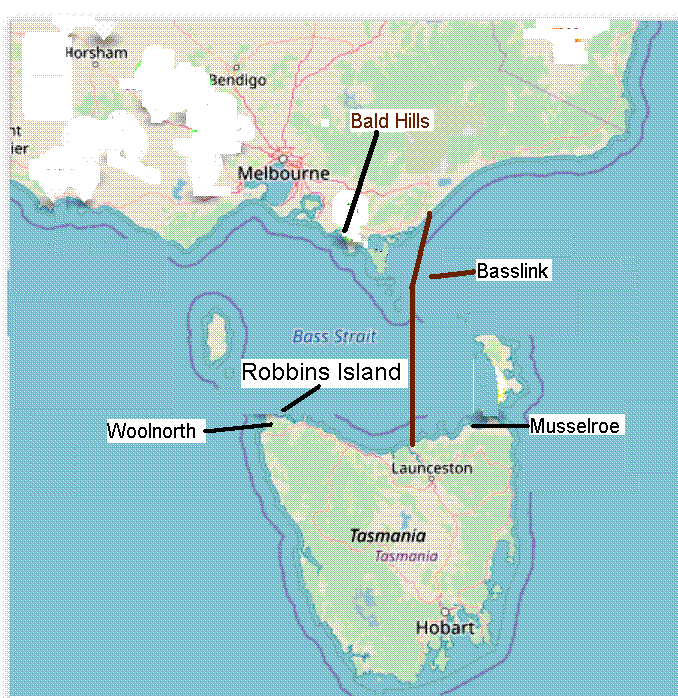
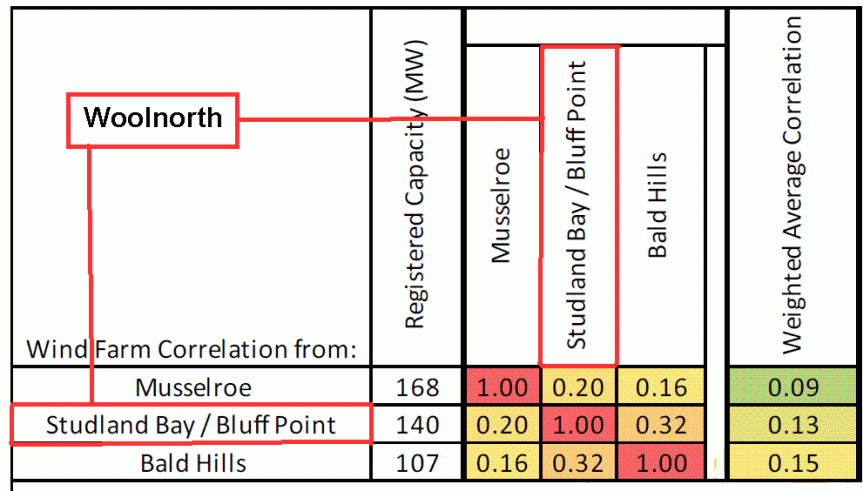
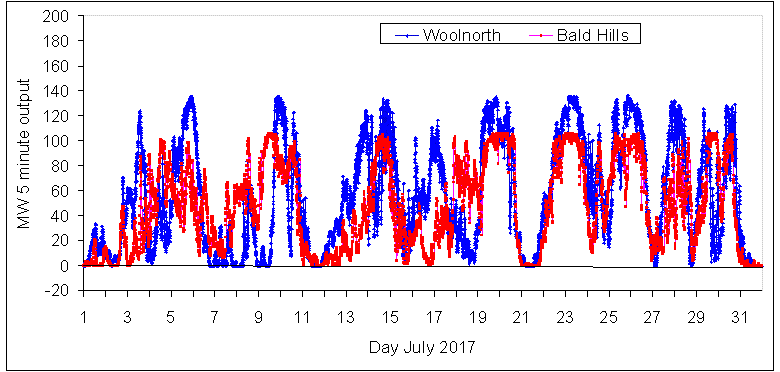
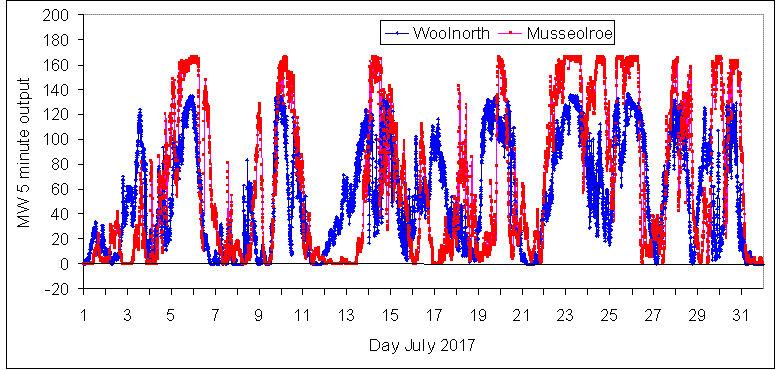
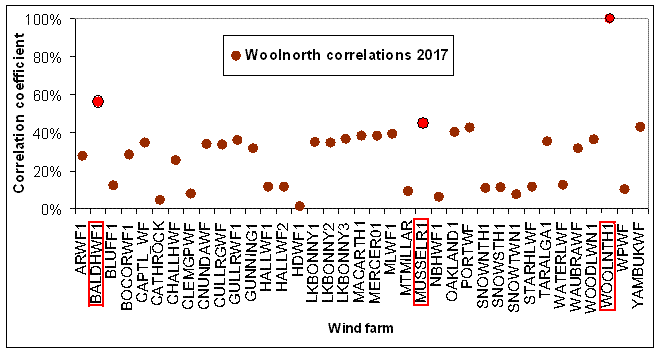


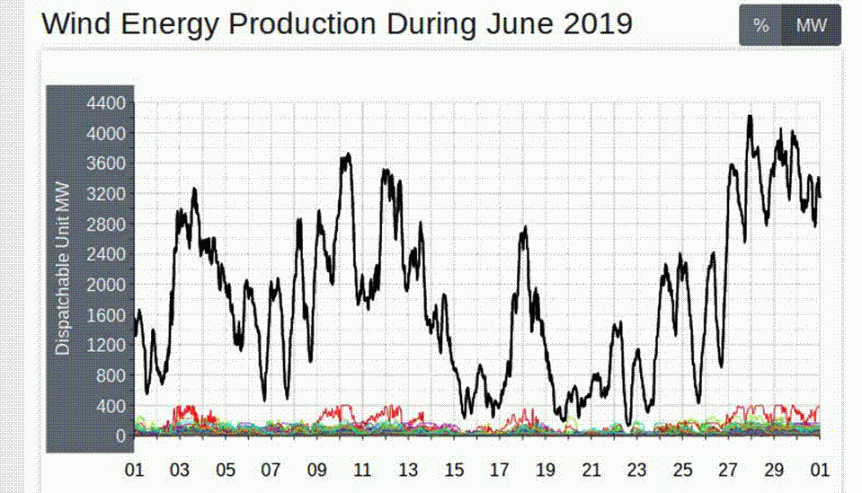
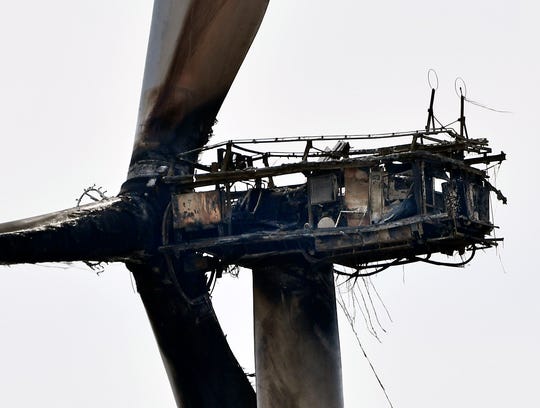
Do I read it correctly? A negative coefficient squared is always a positive number. So any negative in the summation of an analysis of the effects (or lack of) wind power that is squared is then always seen as a positive. Great for advancing the rent-seekers argument to add more wind power, but in the end reality bites, just as it did is good old SA (where I live) when the big blackout occurred, as it will in the eastern states before much longer. Just wait for the political implications then. Arse covering will be the first, bullshite the next.
Thanks for the detailed explanation and ‘outing’ of the proposers misrepresentation.
None of these companies can put together anything that remotely sounds accurate. They spend all their time working out how best they can hide the truth of the damage they are going to inflict on our environments, energy security, health and lives in general.
To add to the massive amount of wind already approved for Victoria which will add to the nightmare proposed for Robbins Island there is the recently sought EPBC approval for the Kentbruck/Nelson nightmare.
157 turbines NOT READY/WILLING TO SAY WHICH TURBINE THEY’LL BE USING though, but want environmental approval!!!! and this project is to be adjacent to a RAMSAR area on one side and National Parks on the other!!!!
They are proposing 4.5MW – 8MW capacity turbines – actually at the meeting they held at Nelson I was first informed the turbines would be 9MW, then someone else said No they were going to be 5MW – obviously they either want to keep it quiet what they are proposing or are unable to decide which to use. However, 157 turbines at 8MW would be a total capacity of 1,256MW, for 9MW 1,413, and for the lowest they have suggested they may use but lets face it won’t is 706.5MW for the 4.5MW turbine. We already know they seek permission for turbines of a smaller capacity then come out trying to sound conciliatory and say they will put in less but larger ones. They should be made to stay with the ones they have received permission for, because they never have to submit new environmental and noise assessments for the later ones they say they will use.
If just this project and the Robbins Island one were to go ahead, it is also be necessary to add in the extra capacity being proposed for SA as well as Victoria and NSW, as well as for Tasmania and Queensland, because they are all linked via the Eastern Grid with energy shuffled and dealt like a pack of cards.
With the pack one day landing in the hands of someone who’s hands slip and the whole lot will come crashing down.
Final Note – no turbines in ACT, they just use the reverse auction ploy to get cheap energy from other States without having to face the damage to lives and environments other State have to.
Reblogged this on Climate- Science.press.